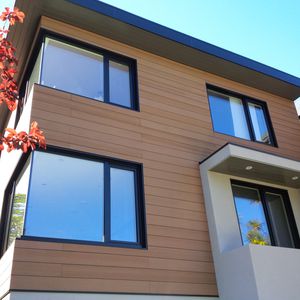In sustainable construction, cladding systems have undergone a remarkable evolution. No longer mere protective layers, they now represent the epitome of energy efficiency and innovation. Join us as we explore the forefront of architectural advancement, delving into the world of the ‘Most Energy-Efficient Cladding Systems.’ In this journey, we will uncover the ingenious designs and sustainable practices shaping the future of construction, showcasing a harmonious blend of artistry and environmental responsibility. Welcome to a lot where aesthetics and energy efficiency seamlessly converge, creating a blueprint for a greener, more sustainable tomorrow.
Aluminum Composite Panels
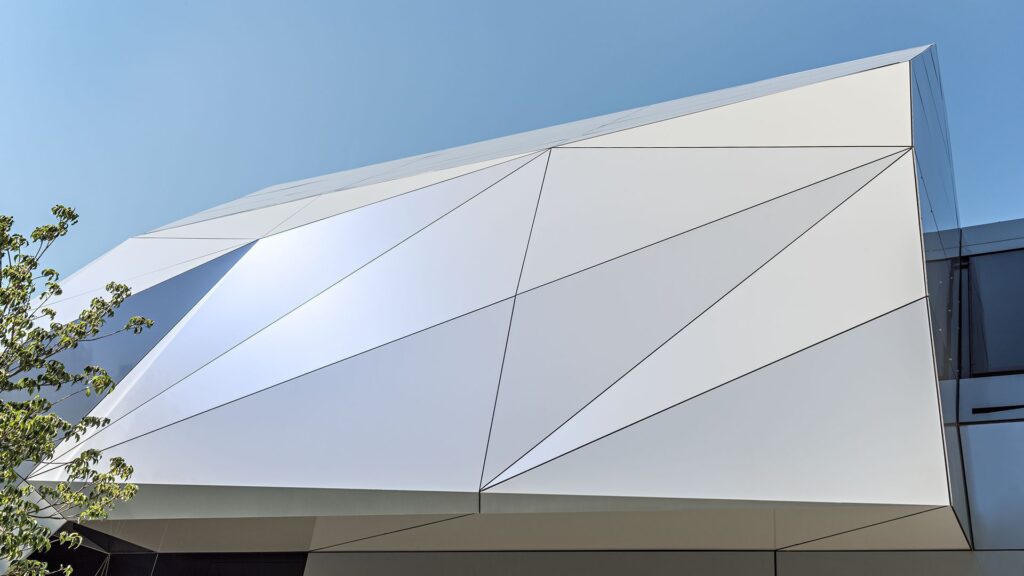
Aluminum Composite Panels (ACP) are a pinnacle in energy-efficient cladding systems. These panels consist of two aluminum sheets bonded to a non-aluminum core, creating a lightweight yet remarkably sturdy structure. The energy efficiency of Aluminum Composite Panels is multifaceted, making them a favoured choice in contemporary construction projects.
1. Thermal Insulation: A critical factor in energy-efficient cladding systems is their ability to provide effective thermal insulation. Aluminum Composite Panels boast excellent insulating properties, helping maintain a stable indoor temperature. These panels contribute significantly to energy conservation by reducing heat transfer, making buildings more energy-efficient.
2. Reflectivity: Aluminum, as a material, has high reflectivity. When used in cladding systems, it reflects a significant portion of solar radiation. This reflective quality minimizes heat absorption, reducing the need for extensive air conditioning, especially in hot climates. Aluminum Composite Panels directly contribute to lower energy consumption by mitigating heat gain.
3. Lightweight Construction: ACP’s lightweight nature simplifies the installation process and reduces building structural load. This characteristic not only streamlines the construction process but also enhances the overall energy efficiency of the building. The reduced weight translates to decreased energy demands during transportation and installation, aligning with the principles of energy-efficient construction.
4. Durability and Low Maintenance: ACPs are famous for their durability and resistance to corrosion and humidity. This longevity ensures that the cladding system retains its efficiency over time. Low maintenance requirements mean fewer resources spent on repairs and replacements, making it an environmentally sustainable choice while also being energy-efficient.
Aluminum Sidings
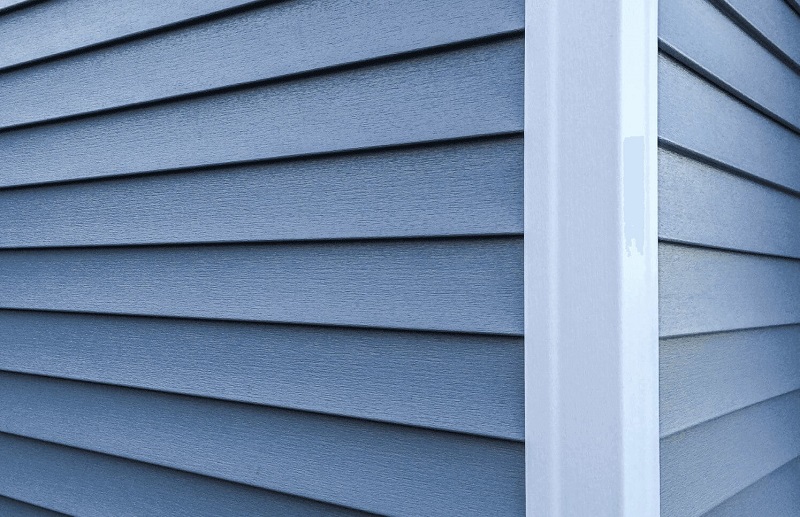
Aluminum sidings are a cornerstone in energy-efficient cladding systems, offering many advantages that contribute significantly to sustainable construction practices.
1. Thermal Efficiency: One of the standout features of aluminum sidings is their exceptional thermal efficiency. These sidings act as an effective barrier against outdoor temperature fluctuations, providing insulation that helps regulate indoor climate. By minimizing heat exchange, aluminum sidings reduce the reliance on heating and cooling systems, leading to considerable energy savings. This intrinsic thermal efficiency aligns them seamlessly with the ethos of energy-efficient cladding systems.
2. Reflectivity and Solar Absorption: Aluminum, by its nature, is highly reflective and has low solar absorption properties. When used as a siding material, it reflects a substantial portion of solar radiation, preventing excess heat from entering the building. This reflectivity reduces the cooling load on the building, ensuring that energy consumption for air conditioning is minimized. Consequently, aluminum sidings promote energy efficiency by curbing the need for excessive cooling, especially in regions with intense sunlight.
3. Lightweight and Eco-Friendly: Aluminum sidings are lightweight, making them easy to transport and install. This characteristic simplifies the construction process and reduces the overall environmental impact. The lightweight nature translates to lower energy requirements during transportation, aligning with the principles of energy-efficient and eco-conscious construction practices.
4. Low Maintenance and Longevity: Aluminum sidings are resistant to rust, corrosion, and damage from harsh weather conditions. This durability ensures a long lifespan with minimal maintenance needs. Buildings clad with aluminum sidings require fewer resources for repairs and replacements, contributing to the structure’s energy efficiency by reducing the ongoing energy and material demands associated with maintenance.
Metal Claddings
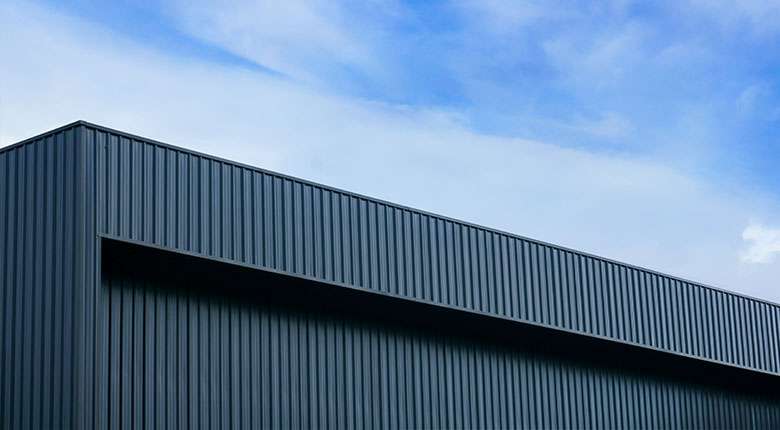
Metal claddings stand as beacons of innovation in energy-efficient cladding systems, offering a perfect blend of functionality, aesthetics, and sustainability.
1. Insulating Properties: Metal claddings can be engineered with insulating layers that provide excellent thermal insulation. By minimizing heat transfer between the exterior and interior of a building, metal claddings ensure superior energy efficiency. These insulating qualities help maintain a pleasant temperature indoors, reducing the need for heating and cooling systems and ultimately decreasing energy usage.
2. Solar Reflectivity: Metals, notably lighter shades, possess high solar reflectivity, meaning they efficiently reflect sunlight away from the building. This inherent property reduces heat absorption, keeping the interior spaces cooler and decreasing the demand for air conditioning. Metal claddings play a pivotal role in energy conservation by mitigating heat gain, making them indispensable in energy-efficient building designs.
3. Durability and Recyclability: Metal claddings are renowned for their durability, weather resistance characteristics, and low maintenance requirements. Their longevity ensures that the building envelope remains intact over the years, reducing the need for frequent replacements. Additionally, metals like aluminum and steel are highly recyclable, aligning with sustainable practices. The recyclability of metal claddings significantly reduces the environmental impact associated with manufacturing new materials, making them an eco-friendly choice.
4. Versatility in Design: Metal claddings offer architects immense design flexibility. They can be tailored to various shapes, sizes, and textures, allowing creative and visually appealing facades. This adaptability in design ensures that energy-efficient buildings do not compromise on aesthetics, promoting sustainable architecture that is both functional and visually striking.
Wood Composite Panels
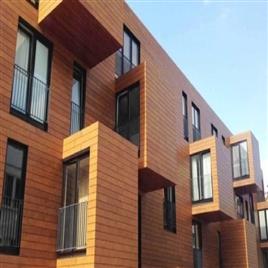
Wood composite panels have emerged as nature’s gift to energy-efficient cladding systems, combining the warmth of wood aesthetics with cutting-edge sustainability features.
1. Natural Insulation: Wood provides natural insulation by its inherent nature. Wood composite panels, crafted from wood fibres and resin blend, offer excellent thermal performance. They create a barrier against heat transfer, aiding in maintaining a consistent indoor temperature. These panels significantly lower energy consumption by reducing the need for excessive heating or cooling, making them pivotal in energy-efficient building designs.
2. Renewable Resource: Wood, a renewable resource, forms the foundation of wood composite panels. Harvesting wood responsibly ensures a continuous supply, making these panels environmentally sustainable. The use of renewable resources aligns with eco-conscious practices, contributing to the overall energy efficiency of a building while minimizing its carbon footprint.
3. Eco-Friendly Manufacturing: The production process of wood composite panels often involves environmentally friendly practices. This includes utilizing recycled wood fibres, low-emission adhesives, and energy-efficient manufacturing techniques. Such eco-friendly methods reduce the environmental impact associated with the production of cladding materials, making wood composite panels an environmentally responsible choice.
4. Low Embodied Energy: These energy-efficient cladding systems typically have a low embodied energy, meaning the total energy required for their production is comparatively low. This characteristic reflects a reduced environmental impact and emphasizes their contribution to sustainable construction practices. Lower embodied energy translates to lower overall energy consumption in the lifecycle of the building, enhancing its energy efficiency.
5. Biodegradability: Wood composite panels are biodegradable, unlike synthetic materials. These panels can naturally decompose at the end of their life cycle, minimizing the environmental burden. This characteristic adds to their eco-friendly profile and underlines their significance in the broader context of energy-efficient and environmentally conscious construction.
Fiber Cement Cladding
Fibre cement cladding stands as a testament to resilient innovation in the realm of energy-efficient cladding systems. Combining strength, durability, and environmental consciousness, fibre cement cladding systems are reshaping the landscape of sustainable construction.
1. Exceptional Durability: Fiber cement cladding is renowned for its durability, with resistance against weather, fire, and pests. This longevity ensures that buildings maintain their integrity over time, reducing the need for frequent replacements and repairs. By minimizing material waste and energy consumption associated with reserves, fibre cement cladding significantly contributes to the energy efficiency of a structure.
2. Thermal Efficiency: Fiber cement cladding offers excellent thermal performance, effectively insulating buildings from external temperature fluctuations. By providing natural insulation, these cladding systems reduce the dependence on heating and cooling appliances, lowering energy consumption. This thermal efficiency aligns fibre cement cladding with the core principles of energy-efficient building design.
3. Low Maintenance: Fiber cement cladding requires minimal maintenance over its lifespan. This energy-efficient cladding system is resistant to decay, rot and insect damage, reducing the need for regular upkeep. The low maintenance requirements mean fewer resources and energy spent on repairs, aligning with sustainable construction practices.
4. Sustainable Composition: Fiber cement cladding typically comprises natural raw materials such as cement, cellulose fibres, sand, and water. These materials are abundant and renewable, reducing the environmental impact associated with cladding production. Fibre cement cladding is also recyclable, enhancing its eco-friendly profile and promoting a circular economy.
5. Versatility and Aesthetics: Fiber cement cladding offers architects and designers a wide range of textures, finishes, and colours. Its versatility allows for creative freedom in architectural designs, ensuring that energy-efficient buildings do not compromise aesthetics. This adaptability promotes the integration of energy-efficient cladding systems into diverse architectural styles and visions.
Other Energy-Efficient Cladding Systems
- Glass Reinforced Concrete (GRC) Panels: GRC panels blending concrete with glass fibres, create lightweight yet durable and energy-efficient cladding systems. Offering design flexibility and weather resistance, they enhance energy-efficient structures with a contemporary aesthetic.
- Natural Stone Cladding: Preserving the organic beauty of stone, natural stone cladding provides timeless elegance. With excellent insulation properties, it enhances aesthetic appeal and contributes significantly to energy efficiency.
- Terracotta Cladding: Made from natural clay, terracotta cladding offers thermal insulation and durability. Its eco-friendly nature and distinctive appearance make it a choice that enhances energy efficiency while adding character to buildings.
- High-Pressure Laminates (HPL): HPL cladding, comprising resin-impregnated paper layers pressed under high pressure, is weather-resistant and versatile. Its durability and aesthetic options make it an energy-efficient choice for modern architectural designs.
- Insulated Metal Panels (IMPs): IMPs feature insulating foam cores between metal skins. These panels offer superior thermal insulation, reducing heat loss and enhancing energy efficiency in diverse architectural applications.
- Polycarbonate Cladding: Translucent polycarbonate panels allow natural light penetration, reducing the need for artificial lighting. This property significantly contributes to energy savings while providing modern, light-filled spaces.
- Brick Slips: Brick slips, thin sections of bricks used as cladding, provide a traditional brick appearance with reduced weight and material usage. This method enhances energy efficiency by maintaining the classic look while conserving resources.
- Stainless Steel Cladding: Stainless steel cladding offers a sleek, modern appearance with exceptional corrosion resistance. Its low maintenance requirements promote energy efficiency by reducing the need for upkeep, ensuring long-lasting durability.
- Ceramic Cladding: Ceramic cladding, comprising fired clay tiles, offers durability and weather resistance. Providing excellent insulation enhances energy efficiency by protecting structures from the elements while adding a timeless aesthetic appeal.
- Timber Cladding: Timber cladding utilizes natural wood, offering a warm and eco-friendly facade. With excellent thermal insulation properties and being a renewable resource, timber cladding significantly enhances the energy efficiency of buildings while providing a natural, rustic charm.

